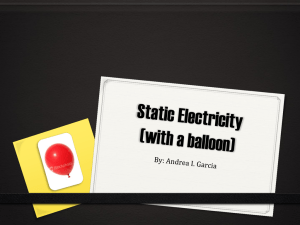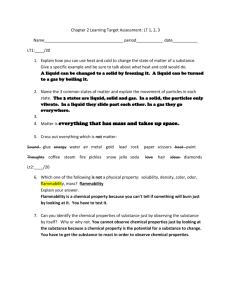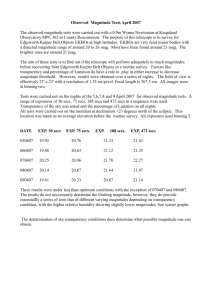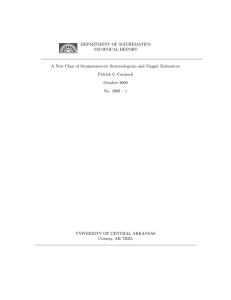Complexity
advertisement
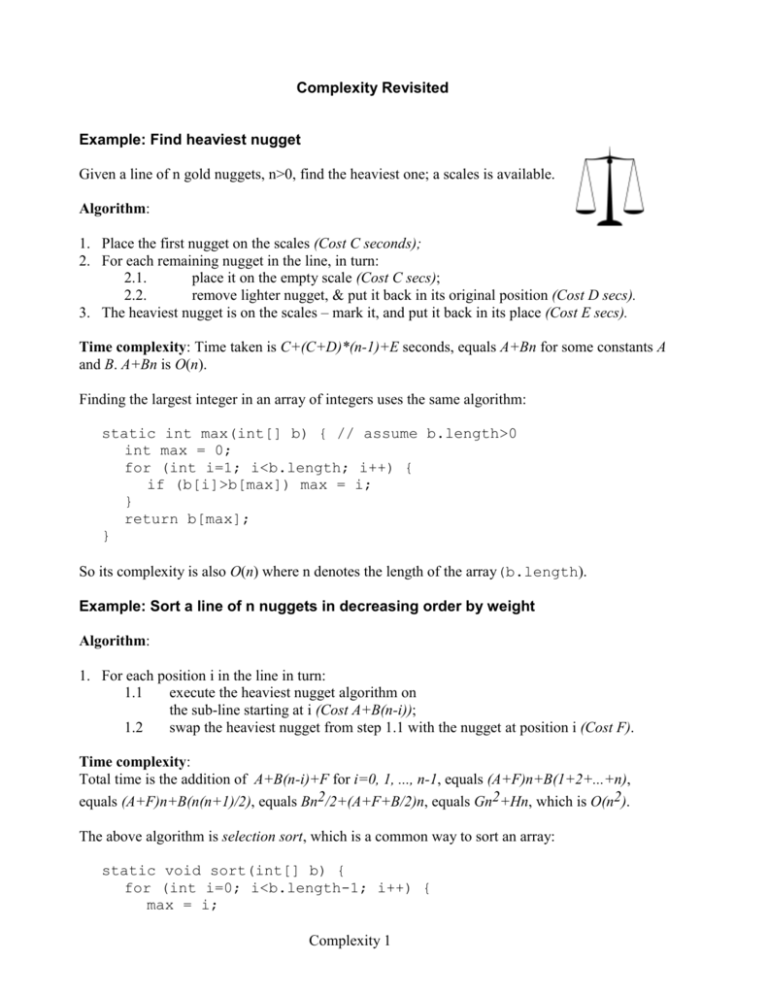
Complexity Revisited
Example: Find heaviest nugget
Given a line of n gold nuggets, n>0, find the heaviest one; a scales is available.
Algorithm:
1. Place the first nugget on the scales (Cost C seconds);
2. For each remaining nugget in the line, in turn:
2.1.
place it on the empty scale (Cost C secs);
2.2.
remove lighter nugget, & put it back in its original position (Cost D secs).
3. The heaviest nugget is on the scales – mark it, and put it back in its place (Cost E secs).
Time complexity: Time taken is C+(C+D)*(n-1)+E seconds, equals A+Bn for some constants A
and B. A+Bn is O(n).
Finding the largest integer in an array of integers uses the same algorithm:
static int max(int[] b) { // assume b.length>0
int max = 0;
for (int i=1; i<b.length; i++) {
if (b[i]>b[max]) max = i;
}
return b[max];
}
So its complexity is also O(n) where n denotes the length of the array(b.length).
Example: Sort a line of n nuggets in decreasing order by weight
Algorithm:
1. For each position i in the line in turn:
1.1
execute the heaviest nugget algorithm on
the sub-line starting at i (Cost A+B(n-i));
1.2
swap the heaviest nugget from step 1.1 with the nugget at position i (Cost F).
Time complexity:
Total time is the addition of A+B(n-i)+F for i=0, 1, ..., n-1, equals (A+F)n+B(1+2+...+n),
equals (A+F)n+B(n(n+1)/2), equals Bn2/2+(A+F+B/2)n, equals Gn2+Hn, which is O(n2).
The above algorithm is selection sort, which is a common way to sort an array:
static void sort(int[] b) {
for (int i=0; i<b.length-1; i++) {
max = i;
Complexity 1
for (int j=i+1; j<b.length; j++)
if (b[j]>b[max]) max = j;
int t = b[i]; b[i] = b[max]; b[max] = t;
}
}
So the time complexity of selection sort is O(n2) where n = b.length.
Big-Oh notation
Big-Oh notation tells us how a function f(n) grows as n increases. In our case, that translates into
the growth of an algorithm’s execution time as the problem size increases.
Function
O-notation
In words
A
A+B(log2 n)
A+B√n
A+Bn
A+B(log2 n)+Cn
A+Bn+Cn(log2 n)
A+Bn+Cn2
A+Cn2+Dn3
A+B2n
O(1)
O(log n)
O(√n)
O(n)
O(n)
O(n log n)
O(n2)
O(n3)
O(2n)
constant
log
square root
linear
linear
n-log-n
quadratic
cubic
exponential
How good?
Sample time for
n=1000
almost instantaneous .0001 secs
stupendously fast
.001 secs
very fast
.03 secs
fast
.1 secs
fast
.1001 secs
pretty fast
1 sec
slow for large n
1 min 40 secs
slow for moderate n 28 hours
impossibly slow
millenia
Let f(n) and g(n) be functions from the naturals to the
reals. We say that eventually f(n)≥g(n) if f(n)≥g(n) for
all n after a certain point. A function f(n) is said to be
O(g(n)) if eventually Cg(n)≥f(n) for some positive
constant C. For example, 2+3n+5n2 is O(n2) because
7n2≥2+3n+5n2 for all n≥3 (the choice of 7 is arbitrary).
The function 3n is not O(n2) because it can be shown
that for any constant C, 3n>Cn2 for all but small values
of n. O-notation does not give a tight upper bound, e.g.
the function 10+20n is O(n) but it is also O(n2).
f
g
n
k
Best case, worst case, average case
The time complexity of an algorithm on an array (or any data structure) may also depend on its
contents. In that case we may make one of three simplifying assumptions. Best case: assume the
contents are as favourable as possible. Worst case: assume the contents are as unfavourable as
possible. Average case: assume the contents are randomly chosen (assuming all possible contents
are equally likely). The average case assumption is the most useful, but it is often important to
know also how bad the execution time can be, and the worst case assumption is used for that.
Time complexity of recursive methods
Complexity 2
Roughly, the time complexity of a recursive method f is the cost of executing the body of f
excluding any recursive calls, times the number of recursive calls. This assumes that the cost of
executing the body is the same for each invocation, which is commonly the case. For example,
the cost of invoking power(m,n) (first version) is O(n) because it involves n calls of power,
and the cost of each call is (more or less) constant. On the other hand, the second version of
power has complexity O(log2 n) as it entails at most 2log2n recursive calls (actually we don’t
write the logarithm base, and just write O(log n)).
Complexity 3
